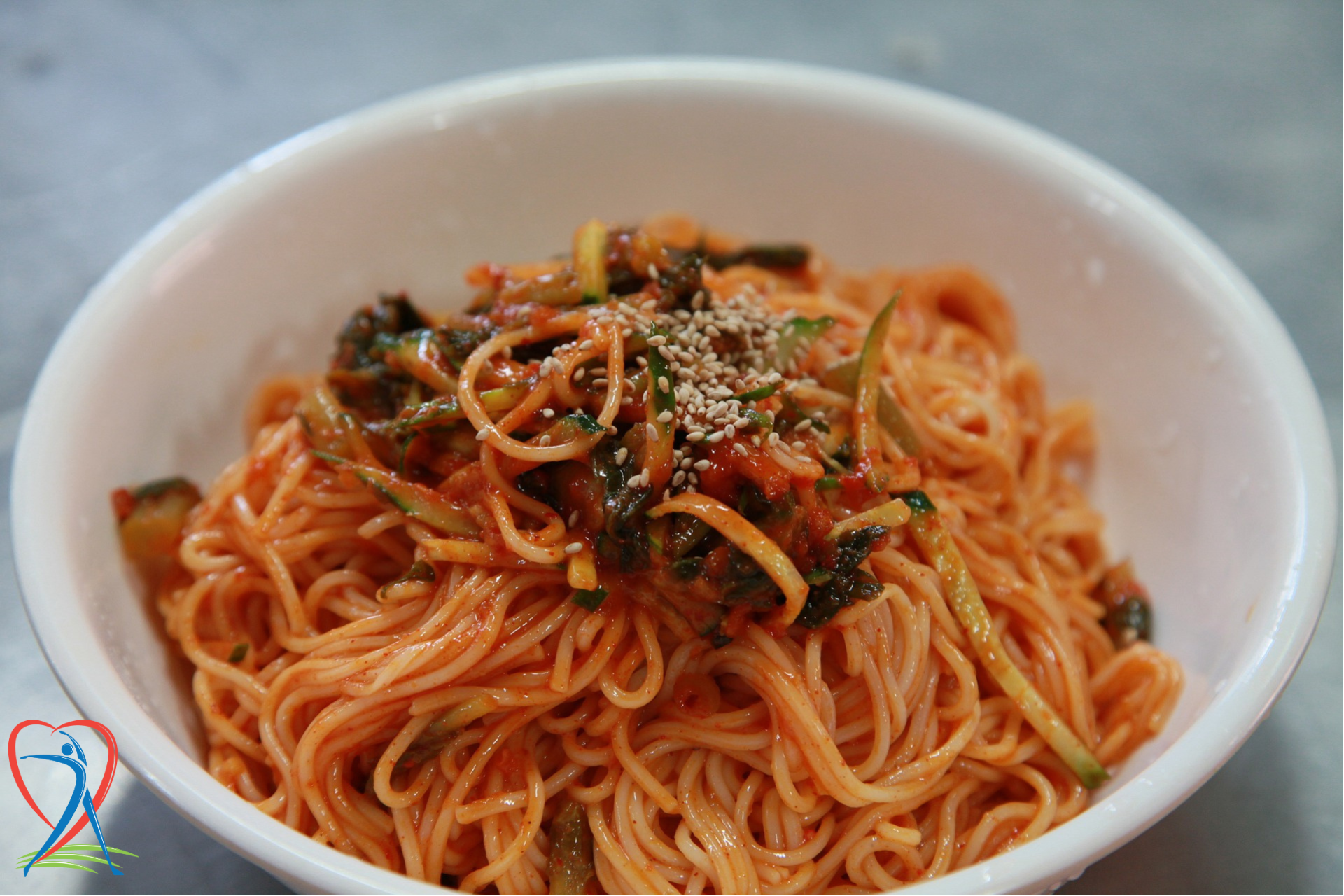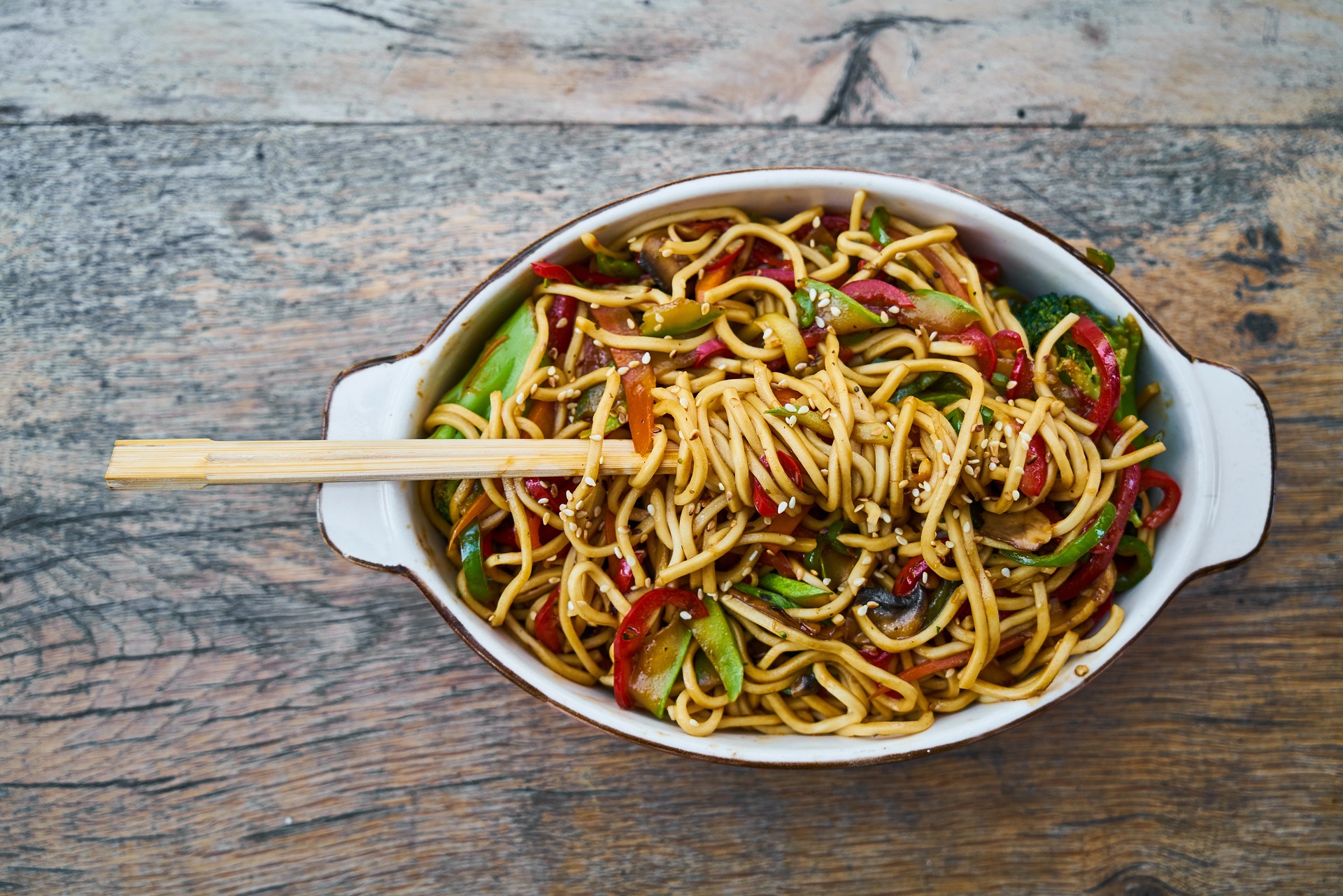 |
Enter the captivating realm of noodles, where flavor and nutrition intertwine to create a culinary experience like no other, from the vibrant markets of Asia to the rustic trattorias of Italy, noodles have enthralled food enthusiasts worldwide with their exquisite taste and remarkable versatility.
Yet, beneath their delicious exterior lies a wealth of health benefits waiting to be uncovered.
Embark with us on a journey through the nutritional landscape of noodles, exploring their potential to invigorate the body, enrich the spirit, and foster a thriving lifestyle.
From their prowess in providing sustained energy to their contributions to heart health and beyond, noodles emerge not only as a culinary delight but also as a cornerstone of wholesome living.
Join Nutri4me as we unravel the captivating fusion of taste and wellness woven into every tantalizing twirl of noodles.
Noodles nutritional facts
Noodles, often considered a staple food in many cultures, offer more than just a satisfying meal—they also provide a diverse array of nutrients essential for overall health and well-being.
Below is a detailed breakdown of the nutritional components found in noodles, including their macronutrient composition, micronutrient content, and potential health benefits:
Macronutrients:
Carbohydrates: Noodles primarily consist of carbohydrates, which serve as the main source of energy for the body, the type of carbohydrate present in noodles varies depending on the ingredients used and the processing method employed.
Whole grain noodles, made from whole wheat or other whole grains, contain complex carbohydrates that are digested more slowly, resulting in a gradual release of energy and a lower impact on blood sugar levels compared to refined varieties.
Protein: While noodles are not typically considered a significant source of protein, they still contribute to overall protein intake.
Protein is essential for muscle repair and growth, immune function, hormone production, and numerous other physiological processes. Noodles paired with protein-rich ingredients such as meat, poultry, seafood, tofu, or legumes can provide a more balanced and satisfying meal.
Fiber: Whole grain noodles are rich in dietary fiber, which is important for digestive health, weight management, and overall well-being. Fiber promotes regular bowel movements, prevents constipation, and supports a healthy gut microbiome. It also contributes to feelings of fullness and satiety, helping to control appetite and manage weight by reducing calorie intake.
Micronutrients:
Vitamins: Noodles may contain various vitamins depending on the ingredients used. Whole grain noodles, in particular, can be a good source of B vitamins such as thiamine (B1), riboflavin (B2), niacin (B3), and folate (B9).
These vitamins play essential roles in energy metabolism, nerve function, DNA synthesis, and red blood cell production. Additionally, noodles may contain small amounts of vitamin E, vitamin K, and vitamin A, depending on the ingredients and processing methods.
Minerals: Noodles can also provide essential minerals necessary for various physiological functions.
Whole grain noodles, in particular, may contain significant amounts of minerals such as iron, magnesium, phosphorus, zinc, and selenium. These minerals are important for bone health, muscle function, immune support, and antioxidant defense.
Health Benefits of Noodles
Weight Management: Whole grain noodles, with their higher fiber content and lower glycemic index, can help promote feelings of fullness and satiety, leading to reduced calorie intake and potentially aiding in weight management.
Digestive Health: The fiber present in whole grain noodles supports digestive health by promoting regular bowel movements, preventing constipation, and nourishing a healthy gut microbiome.
Heart Health: Whole grain noodles, by virtue of their fiber content and nutrient profile, may help lower cholesterol levels, reduce blood pressure, and decrease the risk of cardiovascular diseases such as heart disease and stroke.
Blood Sugar Control: Whole grain noodles have a lower glycemic index compared to refined varieties, resulting in slower and more gradual increases in blood sugar levels. This can be beneficial for individuals with diabetes or those looking to manage blood sugar levels effectively.
Noodles offer a diverse range of nutrients that contribute to overall health and well-being when consumed as part of a balanced diet.
Choosing whole grain varieties and pairing noodles with protein-rich ingredients and an abundance of vegetables can enhance their nutritional value and maximize their health benefits.
Exploring the Multifaceted World of Noodles:
Italian Pasta: Renowned for its diversity, Italian pasta encompasses a wide array of shapes and textures, each suited to different sauces and culinary techniques. From the delicate strands of angel hair pasta to the robust spirals of fusilli, Italian pasta invites culinary creativity and experimentation.
Asian Noodles: Asian cuisine offers a rich tapestry of noodle varieties, ranging from the delicate vermicelli to the hearty udon.
Rice noodles, commonly used in dishes like pho and pad Thai, offer a light and chewy texture, while soba noodles, made from buckwheat flour, boast a nutty flavor and distinctive bite.
Bean Thread Noodles: Also known as cellophane noodles or glass noodles, bean thread noodles are made from starches such as mung bean, potato, or tapioca.
Gluten-free and translucent, these noodles are a staple in Asian cuisine, prized for their versatility and ability to absorb the flavors of accompanying ingredients.
Whole Grain Noodles: Whole grain noodles, crafted from whole wheat or alternative grains like quinoa or buckwheat, offer a nutritional upgrade over refined counterparts.
Rich in fiber, vitamins, and minerals, these noodles provide a wholesome foundation for nourishing meals.
Cooking Noodles in Healthy Ways:
Cooking noodles in healthy ways doesn't mean sacrificing flavor or texture. With a few simple techniques and ingredient swaps, you can transform your noodle dishes into nutritious and satisfying meals.
Here are some tips for cooking noodles in healthy ways:
Choose Whole Grain Noodles: Opt for whole grain or whole wheat noodles instead of refined varieties.
Whole grain noodles are higher in fiber and nutrients, offering better satiety and nutritional value, look for options like whole wheat pasta, brown rice noodles, or soba noodles made from buckwheat flour.
Control Portion Sizes: Be mindful of portion sizes when cooking noodles, stick to the recommended serving size to avoid overconsumption of carbohydrates and calories.
Remember that noodles can be part of a balanced meal when paired with lean proteins, vegetables, and healthy fats.
Use Healthy Cooking Methods: Choose cooking methods that minimize the need for added fats and oils.
Boiling or steaming noodles in water is a healthy option that preserves their texture and nutritional integrity.
Avoid frying noodles or drenching them in heavy sauces, which can add excess calories and unhealthy fats.
Add Plenty of Vegetables: Enhance the nutritional value of your noodle dishes by adding an abundance of vegetables.
Stir-fry colorful veggies like bell peppers, broccoli, carrots, and spinach to create a nutritious base for your noodles.
Not only do vegetables add vitamins, minerals, and fiber, but they also contribute vibrant colors and flavors to your dish.
Incorporate Lean Proteins: Balance your noodle meals by incorporating lean proteins such as grilled chicken, tofu, shrimp, or beans. Protein helps to increase satiety, stabilize blood sugar levels, and support muscle growth and repair.
Add cooked protein to your noodle dishes or serve them alongside for a complete and satisfying meal.
Limit Added Sauces and Condiments: Be mindful of the sauces and condiments you use to flavor your noodles.
Many store-bought sauces can be high in sodium, sugar, and unhealthy fats. Instead, opt for homemade sauces made from wholesome ingredients like olive oil, garlic, herbs, and spices.
You can also use low-sodium soy sauce, tamari, or coconut aminos for added flavor without excess salt.
Experiment with Herbs and Spices: Elevate the taste of your noodle dishes with fresh herbs and spices.
Experiment with flavors like basil, cilantro, mint, ginger, garlic, and chili flakes to add depth and complexity to your meals.
Fresh herbs and spices not only enhance flavor but also provide antioxidants and phytonutrients that promote health and well-being.
Finish with Healthy Toppings: Sprinkle your noodle dishes with nutritious toppings like toasted sesame seeds, chopped nuts, avocado slices, or grated Parmesan cheese.
These toppings add texture, flavor, and a dose of healthy fats and protein to your meal.
By following these tips and incorporating wholesome ingredients into your noodle dishes, you can enjoy delicious and nutritious meals that support your health and well-being.
Experiment with different flavors, textures, and ingredients to create satisfying noodle dishes that nourish your body and delight your taste buds.



0 Comments